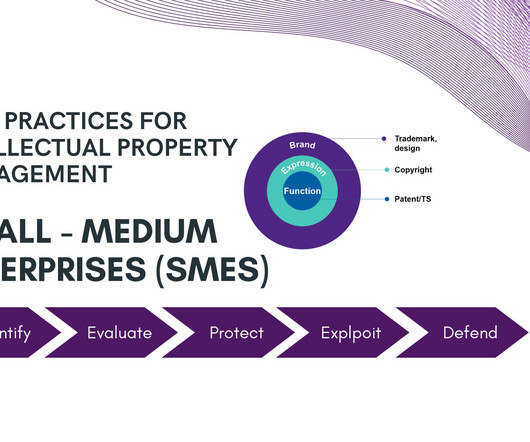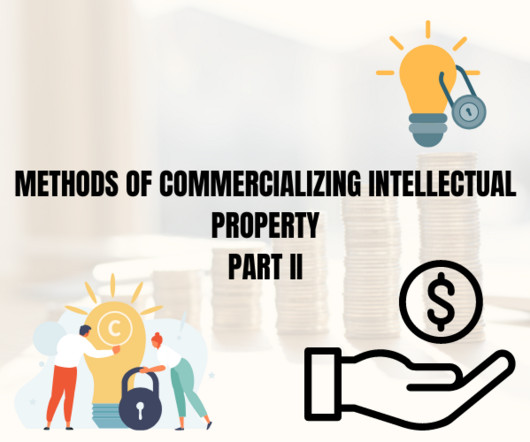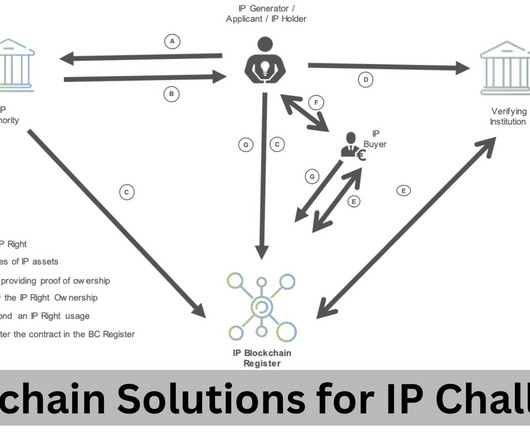Best Practices for Intellectual Property Management in Small to Medium Enterprises (SMEs)
Intepat
MAY 28, 2024
Intellectual property transforms knowledge into an economic result by interacting with legal and economic forces in the market. These intellectual outputs are seen across industries, including creative and cultural sectors. What is Intellectual Property Management?
















Let's personalize your content